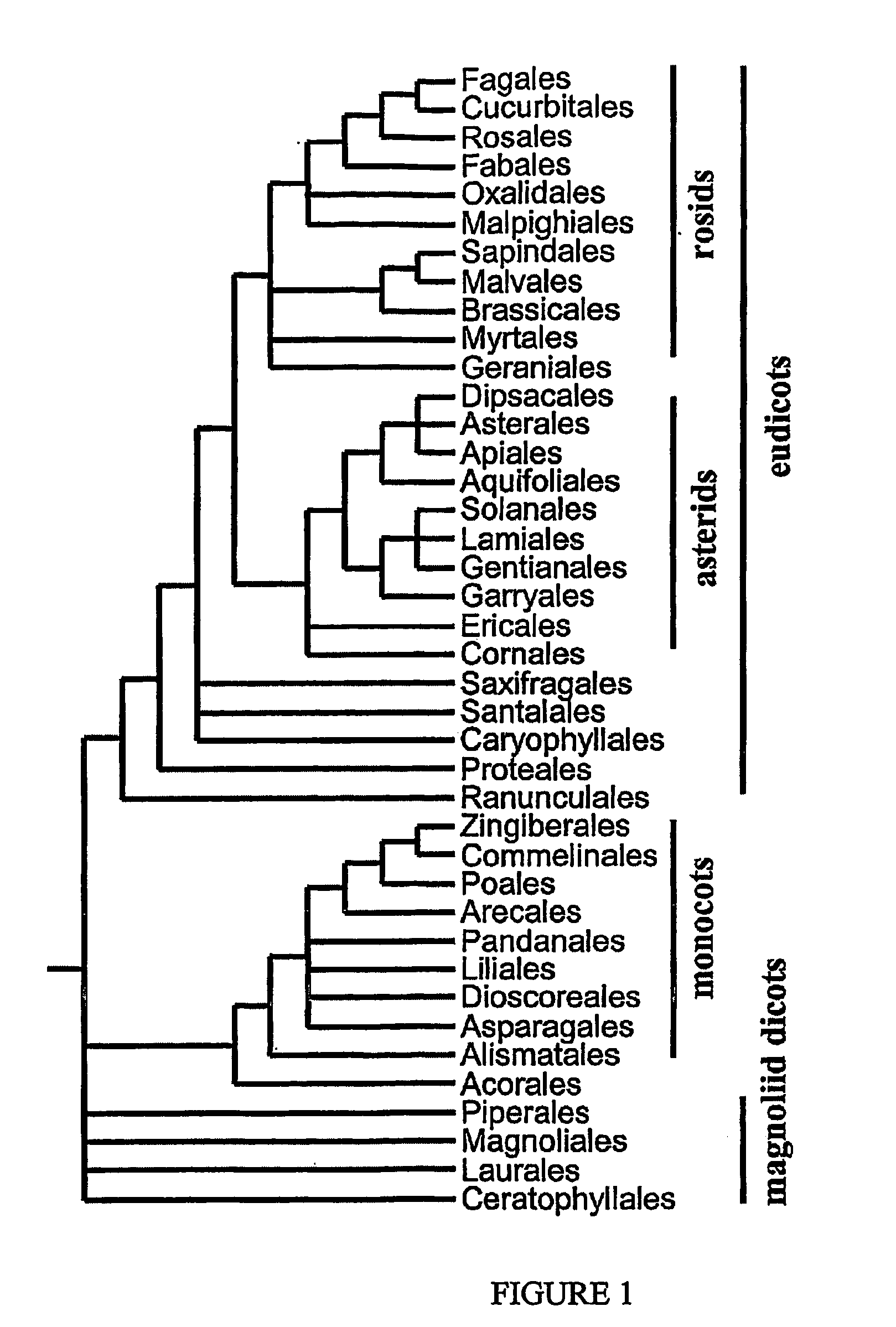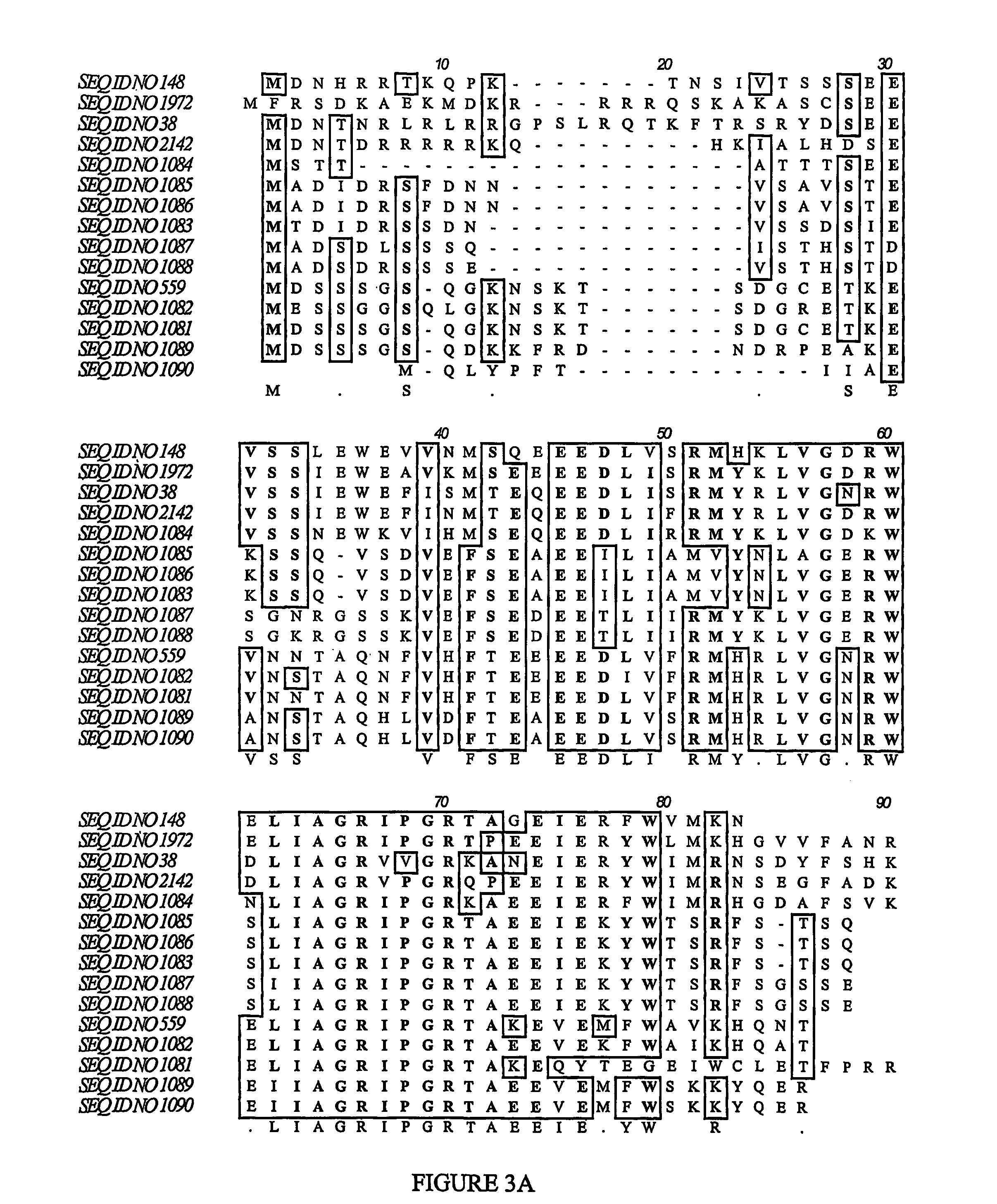Polynucleotides and polypeptides in plants
a polypeptide and plant technology, applied in the field of plant biology, can solve the problems of low yield, easy damage to tropical crops such as soybeans, rice, maize and cotton, and low product quality, and achieve the effect of increasing abiotic stress tolerance in the transgenic plan
- Summary
- Abstract
- Description
- Claims
- Application Information
AI Technical Summary
Benefits of technology
Problems solved by technology
Method used
Image
Examples
examples
[0452] The invention, now being generally described, will be more readily understood by reference to the following examples, which are included merely for purposes of illustration of certain aspects and embodiments of the present invention and are not intended to limit the invention. It will be recognized by one of skill in the art that a transcription factor that is associated with a particular first trait may also be associated with at least one other, unrelated and inherent second trait which was not predicted by the first trait.
[0453] The complete descriptions of the traits associated with each polynucleotide of the invention are fully disclosed in Table 7 and Table 9. The complete description of the transcription factor gene family and identified conserved domains of the polypeptide encoded by the polynucleotide is fully disclosed in Table 8.
example i
Full Length Gene Identification and Cloning
[0454] Putative transcription factor sequences (genomic or ESTs) related to known transcription factors were identified in the Arabidopsis thaliana GenBank database using the tblastn sequence analysis program using default parameters and a P-value cutoff threshold of −4 or −5 or lower, depending on the length of the query sequence. Putative transcription factor sequence hits were then screened to identify those containing particular sequence strings. If the sequence hits contained such sequence strings, the sequences were confirmed as transcription factors.
[0455] Alternatively, Arabidopsis thaliana cDNA libraries derived from different tissues or treatments, or genomic libraries were screened to identify novel members of a transcription family using a low stringency hybridization approach. Probes were synthesized using gene specific primers in a standard PCR reaction (annealing temperature 60° C.) and labeled with 32P dCTP using the High ...
example ii
Construction of Expression Vectors
[0458] For the experiments in Example XIII, two types of constructs were used to modulate the activity of lead transcription factors and test the activity of orthologs and paralogs in transgenic plants. These included direct promoter fusion constructs and two component transformation systems.
[0459] For direct promoter fusion, expression of a single full-length wild-type version of a transcription factor polynucleotide sequence was driven by fusing the polynucleotide directly to a promoter. A number of different promoters may be used, such as the native promoter or that gene, or a promoter that drives tissue specific or conditional expression. In the direct promoter fusion assays found in Example XIII, the CaMV 35S constitutive promoter was used. To clone the sequence into the vector, both pMEN20, derived from pMON316 (Sanders et al. (1987) Nucleic Acids Res. 15:1543-1558), and the amplified DNA fragment (the sequence was amplified from a genomic o...
PUM
| Property | Measurement | Unit |
|---|---|---|
| salt stress | aaaaa | aaaaa |
| abiotic stress tolerance | aaaaa | aaaaa |
| heat tolerance | aaaaa | aaaaa |
Abstract
Description
Claims
Application Information
 Login to View More
Login to View More - R&D
- Intellectual Property
- Life Sciences
- Materials
- Tech Scout
- Unparalleled Data Quality
- Higher Quality Content
- 60% Fewer Hallucinations
Browse by: Latest US Patents, China's latest patents, Technical Efficacy Thesaurus, Application Domain, Technology Topic, Popular Technical Reports.
© 2025 PatSnap. All rights reserved.Legal|Privacy policy|Modern Slavery Act Transparency Statement|Sitemap|About US| Contact US: help@patsnap.com



